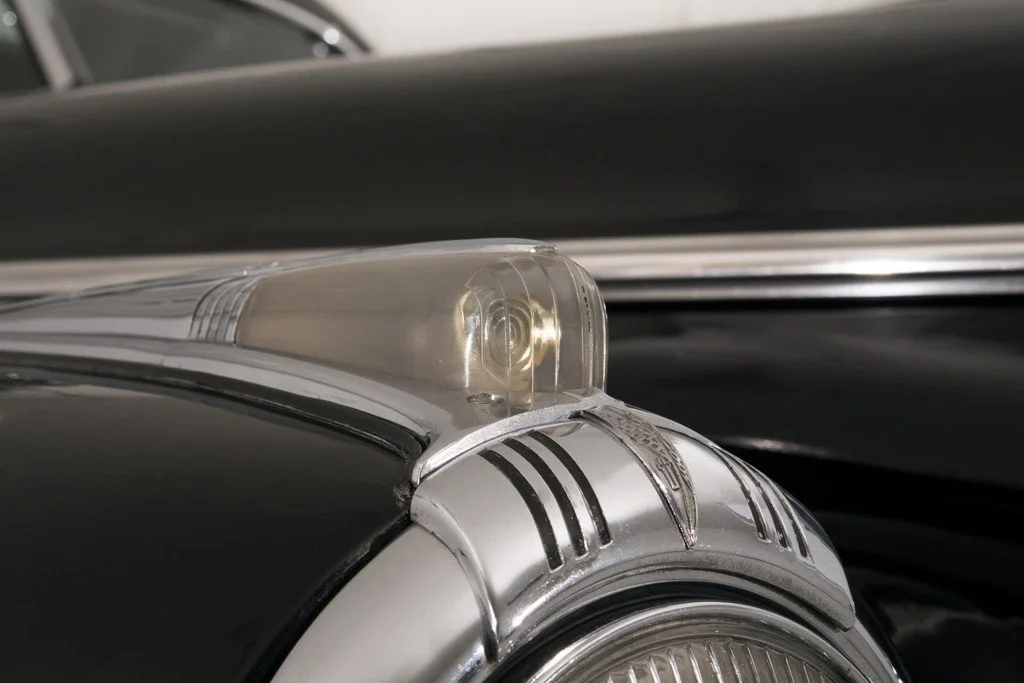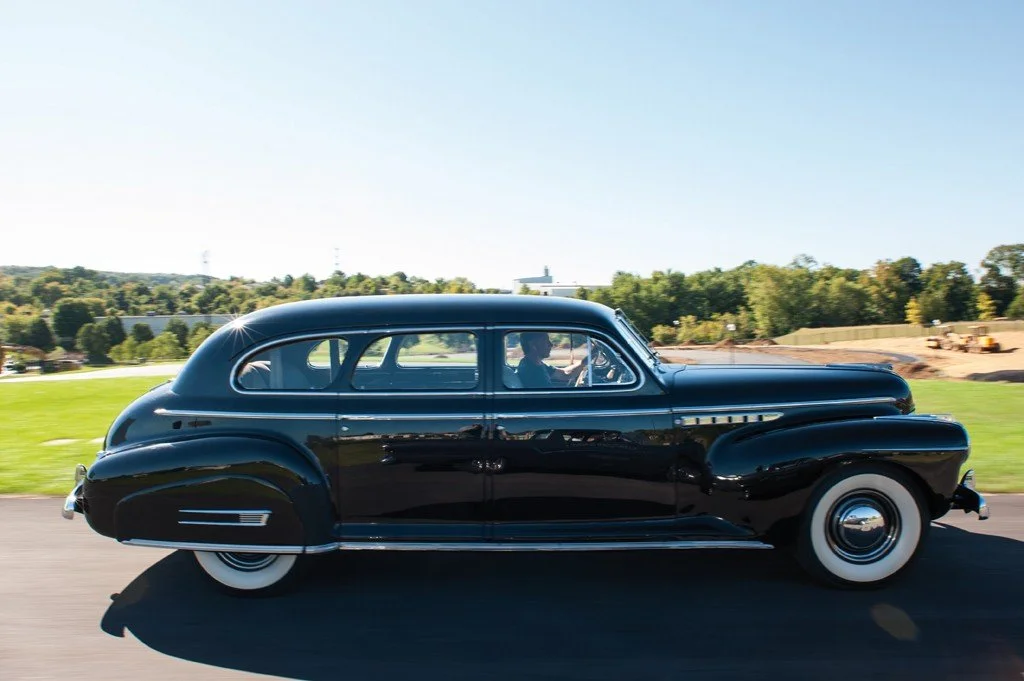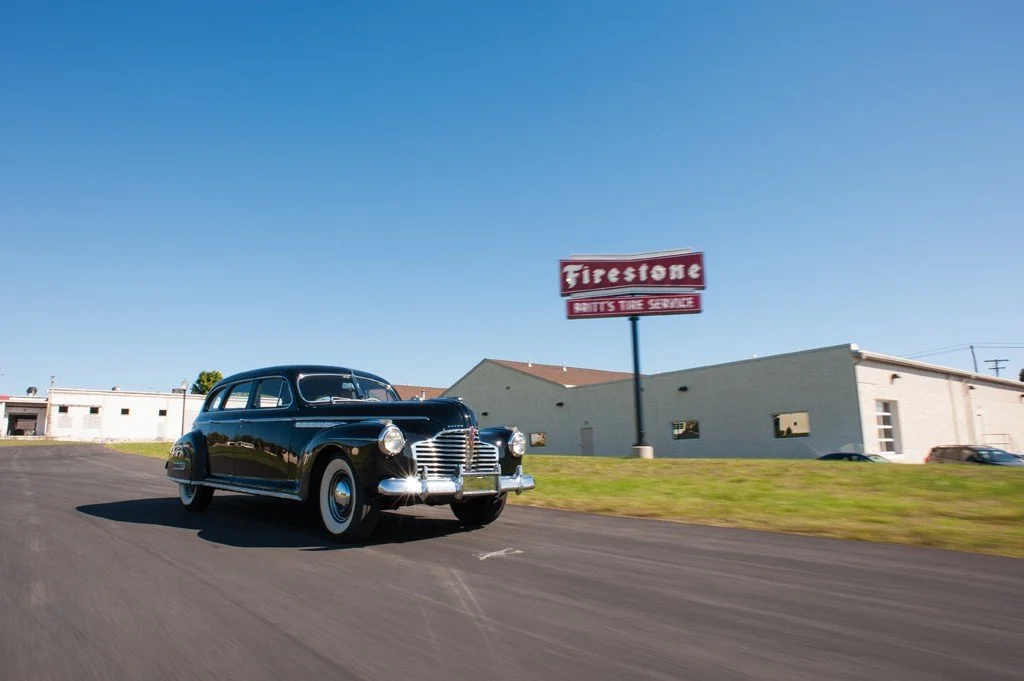-
The Buick Series 90 Limited was considered as the best bargain in the luxury car field, with a price significantly lower than a comparable Cadillac. The body was shared with the Cadillac Series 75, but with its own dash, fenders and hood, giving a completely different feeling from the other General Motors luxury cars.
The 1941 Limited was the last one where wood framing was used in the body. The chassis used a completely new design with a sturdy X center cross-member, and four coil springs for best comfort. The seats were among the most comfortable in the industry, and all kind of luxury accessories were fitted to the interior.
This 1941 Buick Model 90L Limited was purchased by the Nicola Bulgari Car Collection in 2002 from the hands of its second owner. He insisted that the car be driven instead of trailered from his home in Michigan to the Collection site in Pennsylvania, since running conditions were so nice. The 550 miles distance was covered with ease, and only for safety reasons the brake system and the fuel pump were later overhauled. Everything on the car is in perfect original condition, with no restoration work ever needed. -
Company
General MotorsWheelbase
139inInterior trim
Grey clothBrakes
front and rear drumsMake
BuickLength
228inEngine
inline 8 - 320cidTires
7.50x16Model
Limited - Model 90LWidth
83inCarburetor
2 Carter 509/510 SOriginal Price
$2,465Body style
4-door limousineWeight
4,760lbsHorsepower
165hp @ 3800rpmProduction
605Model year
1941Exterior paint
BlackTransmission
Synchro-shift 3-speed manual -
Harlow Curtice, Buick’s chief, and Harley Earl, head stylist of General Motors’ styling department, were close friends. When they met in 1933, Curtice’s first question to Earl was what kind of car he drove. Earl said he drove a Cadillac. Curtice replied by asking Earl to design him a Buick that he would drive himself. The result was the 1936 Buick, a car that completely changed the company image. In 1937, Earl designed the Buick Y-Job, a sporty roadster that influenced the company design for many years to come. Built by Buick’s craftsmen and driven for many years by Curtice himself, the Y-Job was a design masterpiece that set the styling guidelines on all production Buicks, allowing the company to finally forget the dark depression years. Production soared from 43,247 in 1933 to 377,428 in 1941, putting the marque in a solid number four in the production sales charts. Curtice had done a great job of bringing the ailing Buick back in the black, reorganizing every aspect of the marque: design, engineering, sales organization, standardization of parts and interchangeability with other GM division were the keys of Buick’s recovery.
The 1941 Buicks were completely restyled for the year, even if the grille was quite similar to that of the previous year. Eliminating the running boards and concealing the door hinges cleaned up the body, while the headlight completely integrated into the front fenders, the smoother hood and grille, and the sleeker fenders gave the 1941 Buick a more modern look, with a streamlined silhouette. Mechanically, the powerful 320 cubic inches straight-eight engine was completely modified, with new “Turbulator” pistons that featured raised compression and a completely new “Compound Carburation” induction system. For 1941, this new system was the most advanced in the industry. It featured two dual-barrel carburetors on a log manifold. The front carb operated full-time, while the rear one came in on hard acceleration. So, in normal driving, the driver theoretically got the fuel economy of one carburetor, and when the need arose, the driver got the added power of one more. When the system was new, it gave impressive performance, but it was difficult to keep it in good tune, and fuel economy suffered greatly. Many owners had it later modified with a single carb manifold. This carburation set up was the forerunner of the progressive systems widely used on four-barrel carburation of later years. The new 320 cubic inches “Fireball Eight” engine was rated at 165 horsepower at 3800 rpm, and was the most powerful engine on the market in 1941. Top speed was more than hundred miles per hour, while acceleration was almost one second better from 5 mph to 60 than Cadillac, with times in the eleven seconds range.
Not only was performance great in 1941, but also comfort on the road was the best on the market. Full coil suspension, large brakes, quick steering all made for a car that the buying public really enjoyed, with better features and more performance than Cadillac or Packard, at a significantly lower price. As an example, the Buick Limited was faster, quieter and more comfortable than the Cadillac Series 75, but the price was lower by 400 dollars. As a result, it outsold the more prestigious rival by a margin of three to one, contributing to a record year for Buick sales.















